The NHS (National Health Service) is a vast and intricate system where diverse NHS staff roles work together seamlessly to deliver exceptional patient care. At the heart of this collaboration lie Multidisciplinary Teams (MDTs), where every professional contributes their expertise to ensure holistic treatment and improved outcomes for patients.
From doctors and nurses to Allied Health Professionals (AHPs) like Occupational Therapists (OTs) and Physiotherapists (PTs), every NHS staff role plays a crucial part in maintaining the quality of care. Understanding these roles is vital, especially for newcomers, including international healthcare professionals, to integrate smoothly into this dynamic environment.
This blog breaks down the structure of NHS teams, highlighting the responsibilities of various professionals in MDTs and how their collaboration drives better healthcare outcomes.
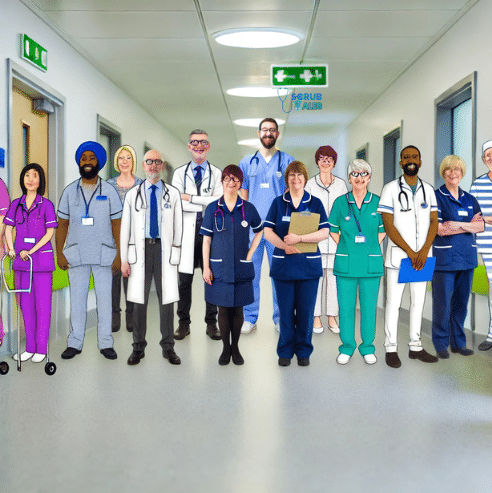
1. Nursing Teams in the NHS Staff Roles
Nursing teams form the backbone of patient care in the NHS, playing a vital role in Multidisciplinary Teams (MDTs) to ensure seamless healthcare delivery. Nurses operate across various bands, each with distinct responsibilities and expertise. Here’s an overview of key nursing roles in the NHS:
a. Healthcare Assistants (HCAs)
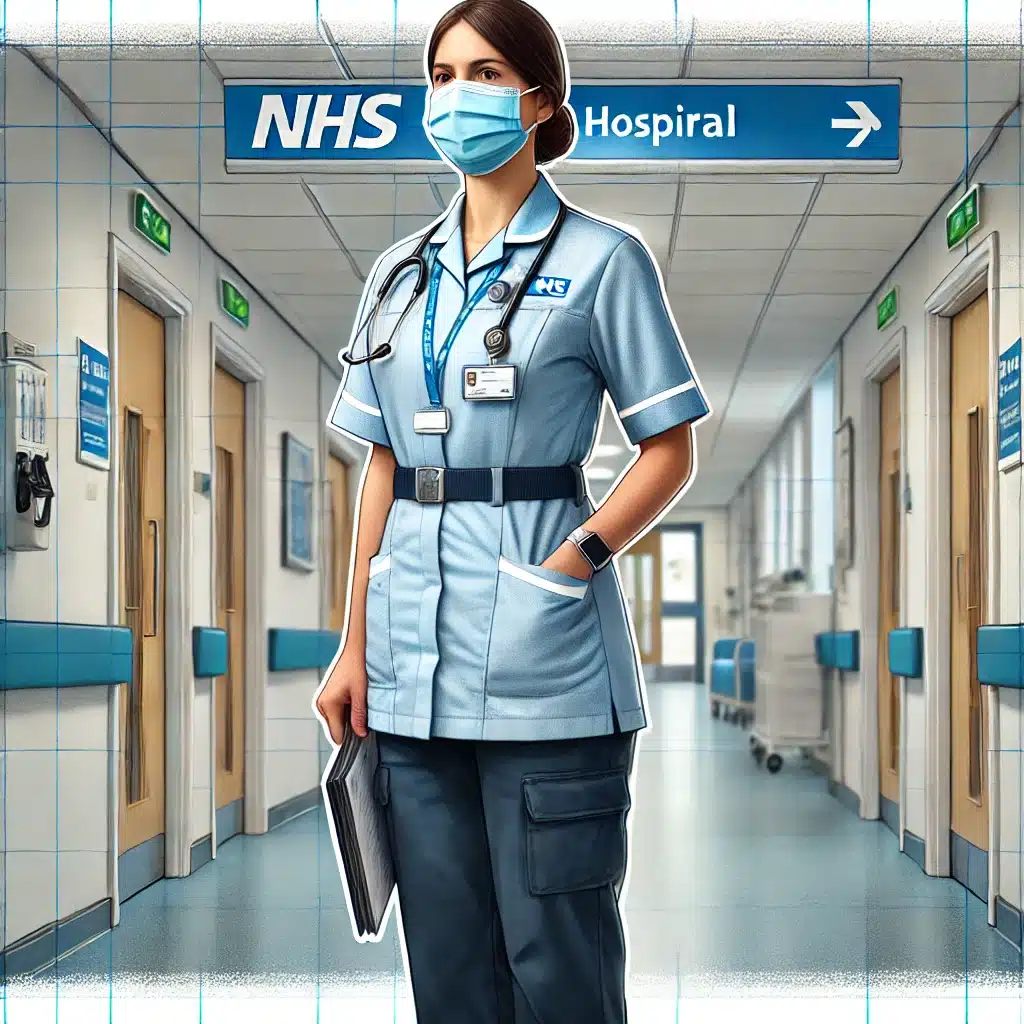
Healthcare Assistants (HCAs) are essential members of the NHS team, working under the supervision of registered nurses to deliver hands-on care.
- Responsibilities: Assisting patients with basic needs such as feeding, bathing, and mobility. HCAs also take vital signs, such as blood pressure and temperature.
- Common Bands: HCAs are typically employed at Band 2 or 3, depending on their experience and training.
- Role in MDT: HCAs ensure day-to-day patient comfort, enabling nurses and doctors to focus on clinical care.
b. Staff Nurses
Staff nurses are registered professionals who provide direct patient care and are often the primary point of contact for patients in the NHS.
- Responsibilities: Administering medications, performing wound care, managing IV lines, and monitoring patient progress.
- Common Bands: Most staff nurses work at Band 5.
- Role in MDT: They collaborate closely with other NHS staff roles, including doctors and AHPs such as Physiotherapists (PTs) and Occupational Therapists (OTs), to implement patient care plans effectively.
c. Senior Nurses
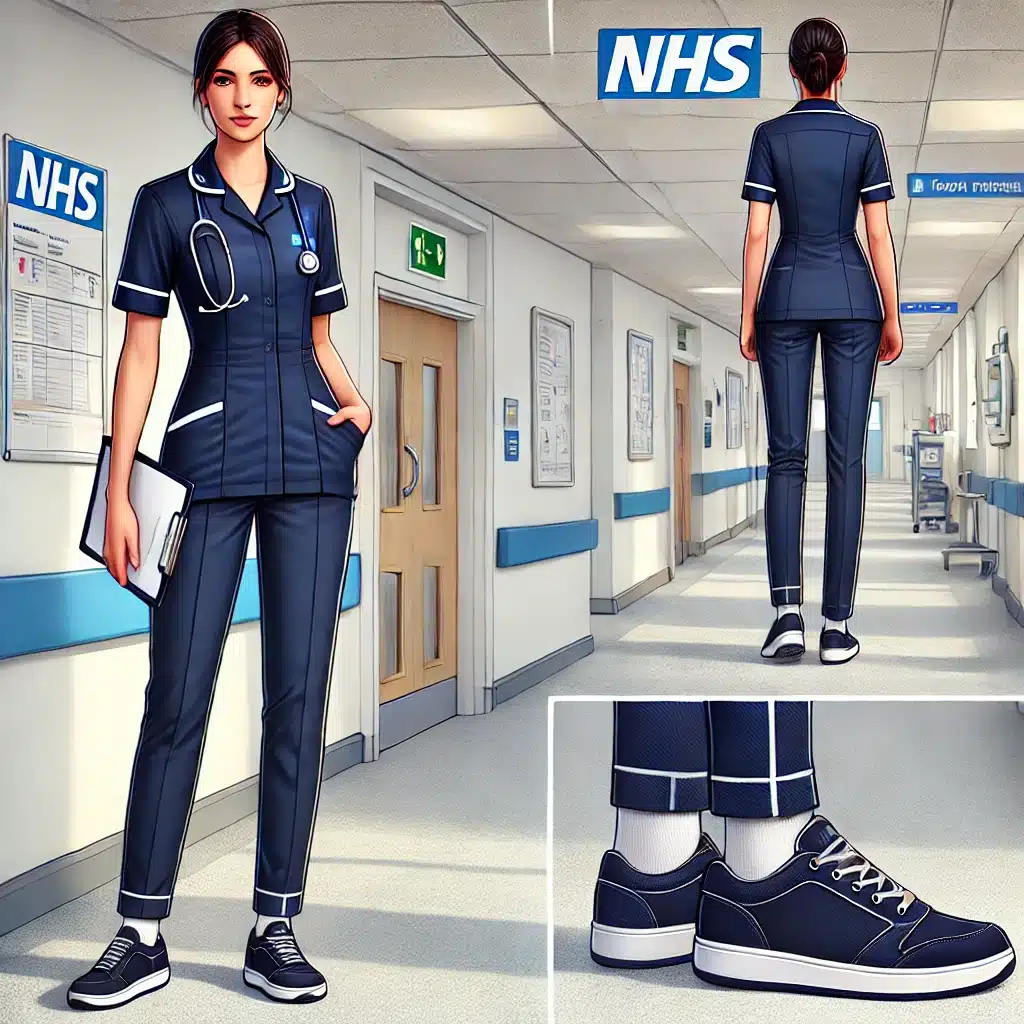
Senior nurses oversee clinical care on the ward and provide guidance to junior staff, ensuring quality standards in patient care.
- Responsibilities: Leading nursing teams, managing resources, and acting as a bridge between staff nurses and hospital management.
- Common Bands: Band 6 or 7, depending on their managerial responsibilities.
- Role in MDT: They play a critical role in MDTs by coordinating care across different specialties, ensuring patient needs are met holistically.
d. Specialist Nurses
Specialist nurses bring advanced expertise in specific areas of healthcare, such as diabetes, oncology, or wound care.
- Responsibilities: Providing specialized treatments, educating patients about managing chronic conditions, and advising MDT members.
- Common Bands: Band 6 or higher, based on their specialization.
- Role in MDT: Specialist nurses often lead the development of patient care plans, working alongside other NHS staff roles to address complex health issues.
e. Advanced Nurse Practitioners (ANPs)
Advanced Nurse Practitioners (ANPs) are highly trained nurses who take on responsibilities traditionally handled by doctors.
- Responsibilities: Diagnosing conditions, prescribing medications, and conducting assessments.
- Common Bands: Band 8 or higher, depending on qualifications and experience.
- Role in MDT: ANPs enhance the efficiency of MDTs by providing advanced clinical expertise and reducing the workload on doctors.
2. Allied Health Professionals (AHPs) in the NHS Staff Roles
Allied Health Professionals (AHPs) are integral to the NHS, providing specialized care and working collaboratively within Multidisciplinary Teams (MDTs) to improve patient outcomes. These professionals are vital to the smooth functioning of healthcare services and contribute significantly to the diversity of NHS staff roles. Below is a detailed look at some of the key AHP roles:
Occupational Therapists (OTs)
Occupational Therapists play a crucial role in helping patients regain independence after illness or injury.
- Responsibilities: Assessing patients’ ability to perform daily tasks, such as dressing or cooking, and recommending assistive devices or environmental modifications.
- Key Areas: Stroke rehabilitation, elderly care, and mental health support.
- Role in MDT: OTs collaborate with Physiotherapists (PTs), nurses, and doctors to create tailored rehabilitation plans, ensuring patients achieve functional independence.
Physiotherapists (PTs)
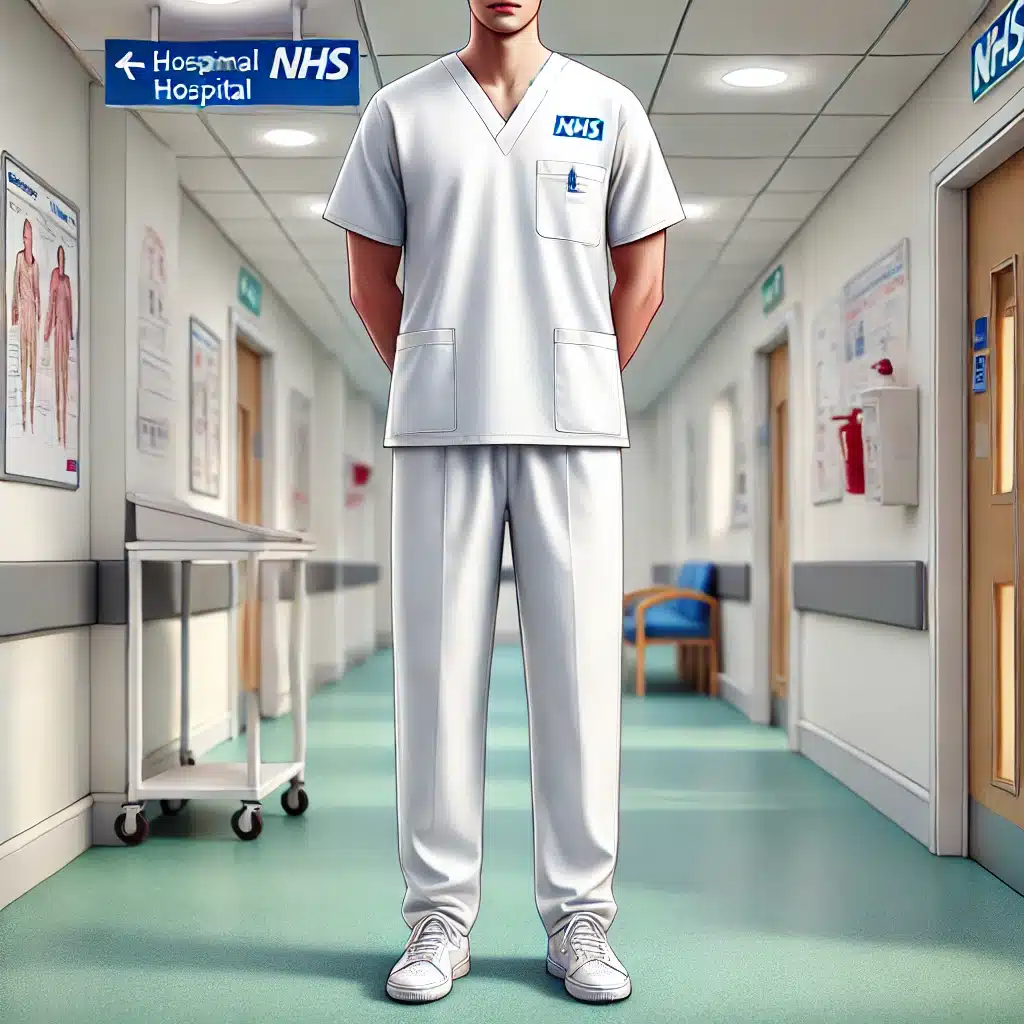
Physiotherapists focus on improving mobility, reducing pain, and enhancing physical function through therapy and rehabilitation.
- Responsibilities: Developing rehabilitation programs, treating musculoskeletal conditions, and supporting post-surgery recovery.
- Key Areas: Orthopedics, respiratory care, and neurological rehabilitation.
- Role in MDT: PTs work closely with OTs, doctors, and nursing staff to ensure patients achieve optimal physical recovery and maintain long-term mobility.
In case you need complete list, you should check out NHS detailed guide.
Difference Between Occupational Therapists (OTs) and Physiotherapists (PTs) in an NHS Hospital
| Aspect | Occupational Therapists (OTs) | Physiotherapists (PTs) |
|---|---|---|
| Focus Area | Helping patients regain independence in daily activities. | Restoring movement, improving mobility, and managing pain. |
| Key Interventions | Recommending assistive devices, home modifications, and energy conservation techniques. | Designing exercise programs, providing manual therapy, and treating musculoskeletal conditions. |
| Common Scenarios | Assisting stroke patients with dressing or cooking; supporting patients with cognitive impairments. | Helping post-operative patients regain mobility; treating musculoskeletal or neurological conditions. |
| Assessment Tools | Functional Independence Measure (FIM), environmental assessments. | Gait analysis, Range of Motion (ROM) tests. |
| Role in MDT | Collaborates with dietitians, nurses, and social workers to address functional challenges. | Works with doctors, nurses, and other therapists to improve physical recovery. |
| Key Differentiator | Focus on function and daily tasks. | Focus on movement and physical mobility. |
| Typical Dress Code | Professional uniform, often white or blue with green piping (varies by trust). | Uniform with different piping color, often white with navy or black; sometimes polo shirts and trousers. |
| Footwear | Comfortable, closed-toe shoes for ward work. | Supportive athletic shoes for physical activities. |
| Accessories | Adaptive device samples, assessment tools (e.g., pen torch). | Resistance bands, goniometers, exercise sheets. |
Speech and Language Therapists (SALTs)
Speech and Language Therapists assist patients with communication and swallowing difficulties, often arising from neurological conditions or trauma.
- Responsibilities: Diagnosing and treating speech disorders, language impairments, and swallowing difficulties.
- Key Areas: Pediatric therapy, post-stroke care, and neurological rehabilitation.
- Role in MDT: SALTs contribute critical input during MDT discussions, particularly for patients requiring dietary modifications or alternative communication methods.
Dietitians
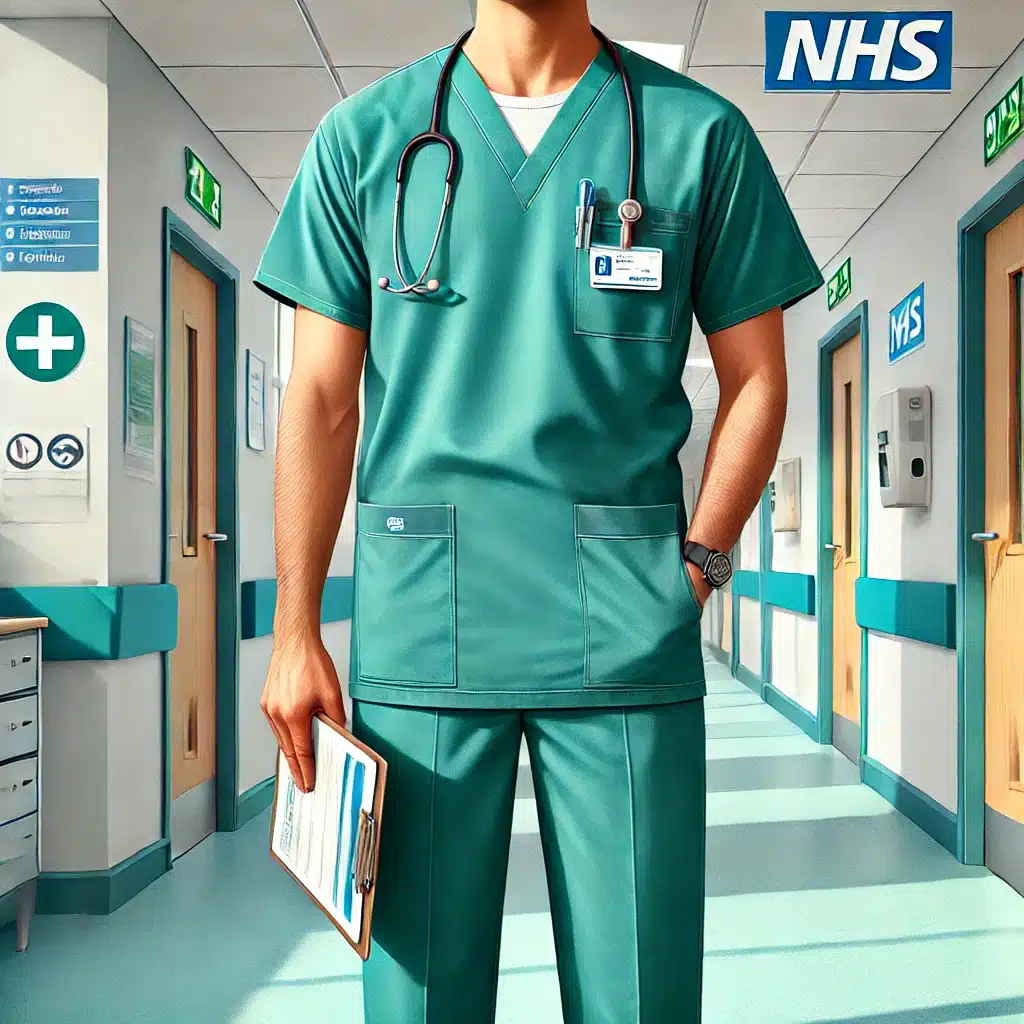
Dietitians are specialists in nutrition and dietary management, ensuring that patients receive appropriate nutritional care tailored to their medical needs.
- Responsibilities: Assessing nutritional requirements, developing diet plans, and managing conditions such as diabetes, obesity, and gastrointestinal disorders.
- Key Areas: Clinical nutrition, pediatric care, and chronic disease management.
- Role in MDT: Dietitians collaborate with doctors, nurses, and other AHPs to address complex nutritional needs, particularly for patients requiring enteral or parenteral nutrition.
Radiographers
Radiographers are key contributors to diagnostics and treatment planning, offering imaging services that guide clinical decisions.
- Role in MDT: Radiographers provide essential diagnostic information that supports MDT decision-making, enabling timely and accurate treatment planning.
- Responsibilities: Operating advanced imaging equipment, such as X-rays, MRIs, and CT scanners, while ensuring patient safety during procedures.
- Key Areas: Diagnostic radiography, trauma imaging, and therapeutic radiography for cancer treatment.
3. Doctors in the NHS Staff Roles
Doctors are central to the NHS, providing medical expertise and leadership within Multidisciplinary Teams (MDTs). As a critical part of the NHS staff roles, doctors work at different levels of training and specialize in various fields, each contributing uniquely to patient care. Here’s an overview of key doctor roles and their responsibilities within MDTs:
On-Call Doctors
On-call doctors are pivotal in managing urgent patient needs and emergencies, often during evenings, nights, and weekends.
- Responsibilities: Managing deteriorating patients, conducting assessments, stabilizing emergencies, admitting new patients, and adjusting care plans.
- Common Levels: Foundation Year (FY) doctors, Senior House Officers (SHOs), and Registrars.
- Role in MDT: On-call doctors collaborate with nurses, Allied Health Professionals (AHPs), and support staff to ensure timely interventions, addressing acute needs efficiently.
Junior Doctors
Junior doctors, typically in their early years of training, are the backbone of day-to-day medical care in the NHS.
Check out our guide on Trac Job applications if you are struggling to land your first interview.
- Responsibilities: Writing patient notes, prescribing medications, monitoring progress, and performing minor procedures under supervision.
- Common Levels: Foundation Year 1 (FY1) and Foundation Year 2 (FY2).
- Role in MDT: Junior doctors work closely with other NHS staff roles, including nurses, Physiotherapists (PTs), and Occupational Therapists (OTs), to implement and monitor patient care plans.
Registrars
Registrars are specialty trainees responsible for more complex medical tasks as they progress toward becoming consultants.
- Responsibilities: Managing complex cases, supervising junior doctors, and performing specialized procedures.
- Role in MDT: Registrars often lead MDT discussions, integrating insights from team members such as Speech and Language Therapists (SALTs), dietitians, and nurses to create cohesive, comprehensive care plans.
Consultants
Consultants are senior doctors who have completed their training and specialize in a specific medical or surgical field.
- Responsibilities: Overseeing patient care, making critical decisions, and leading specialty teams. They also play a significant role in teaching and research.
- Role in MDT: Consultants provide clinical leadership within MDTs, ensuring that each patient receives a comprehensive, coordinated care plan while mentoring other NHS staff roles.
General Practitioners (GPs)
General Practitioners are community-based doctors, often the first point of contact for patients.
- Responsibilities: Diagnosing illnesses, managing chronic diseases, and referring patients to specialist services when needed.
- Role in MDT: GPs act as a bridge between hospital MDTs and community services, ensuring continuity of care after patients are discharged and integrating their insights into patient recovery plans.
Locum Doctors
Locum doctors provide temporary cover in hospitals and clinics, filling in for absent staff members.
- Responsibilities: Performing ward rounds, patient assessments, and on-call duties as required.
- Role in MDT: Locum doctors seamlessly integrate into MDTs, ensuring continuity in care during staffing shortages and maintaining the standards expected of their role.
4. Support Staff in the NHS Staff Roles
Support staff are the unsung heroes of the NHS, playing a critical role in ensuring the smooth running of hospitals and clinics. These essential NHS staff roles provide non-clinical and logistical support, enabling doctors, nurses, and Allied Health Professionals (AHPs) to focus on delivering patient care. Here’s an overview of their contributions:
Porters
Porters are integral to the daily operations of NHS facilities, ensuring smooth transitions for patients and supplies.
- Responsibilities: Transporting patients between departments, delivering medical supplies, and assisting with equipment setup.
- Role in MDT: Porters ensure patients and equipment are in the right place at the right time, contributing to the efficiency and effectiveness of MDTs.
Administrative Staff
Administrative staff are the backbone of organizational processes within the NHS, handling critical documentation and coordination.
- Responsibilities: Managing appointments, maintaining patient records, and coordinating referrals to ensure seamless communication.
- Role in MDT: Administrative staff facilitate information flow between team members, ensuring accurate and accessible patient information to support clinical decisions.
Housekeeping and Cleaning Staff
Housekeeping staff maintain cleanliness and hygiene, which is essential for patient safety and infection control.
- Responsibilities: Cleaning patient rooms, sterilizing medical equipment, and managing waste disposal.
- Role in MDT: Their efforts create a safe environment for both patients and healthcare professionals, forming a crucial foundation for effective healthcare delivery.
Catering Staff
Catering staff ensure that patients receive meals tailored to their dietary and nutritional needs during their hospital stay.
- Responsibilities: Preparing and delivering meals, accommodating dietary restrictions, and maintaining food safety standards.
- Role in MDT: Catering staff collaborate with dietitians and nurses to provide meals that support patients’ health and recovery.
Security Staff
Security staff protect the safety and security of NHS facilities, ensuring a secure environment for patients, staff, and visitors.
- Responsibilities: Managing access to restricted areas, responding to emergencies, and de-escalating conflicts when necessary.
- Role in MDT: Security staff contribute to a safe and focused healthcare environment, allowing clinical teams to prioritize patient care.
5. Pharmacy Team in the NHS Staff Roles
The pharmacy team plays a pivotal role in the NHS, ensuring patients receive safe and effective medications.
As a critical NHS staff role, they work closely with other healthcare professionals within Multidisciplinary Teams (MDTs) to optimize drug therapy and improve patient outcomes. Here’s a closer look at the various roles within the pharmacy team:
Pharmacists
Pharmacists are medication experts, ensuring that every prescription is safe, effective, and tailored to the patient’s needs.
- Responsibilities: Reviewing prescriptions, advising on medication use, and educating patients about potential side effects. Pharmacists also manage drug interactions and adjust dosages as necessary.
- Key Areas: Hospital pharmacies, community settings, and specialized clinics such as oncology or geriatrics.
- Role in MDT: Pharmacists collaborate with doctors, nurses, and Allied Health Professionals (AHPs) to create comprehensive care plans, ensuring optimal and safe medication use.
Pharmacy Technicians
Pharmacy technicians provide vital support to pharmacists by managing medication preparation and inventory control.
- Responsibilities: Assembling medications, ensuring accurate dispensing, and educating patients about administering medications. They also handle stock management and supply chain logistics.
- Key Areas: Hospital wards, dispensaries, and outpatient clinics.
- Role in MDT: Pharmacy technicians ensure the timely delivery of medications, enabling other healthcare professionals to focus on patient care. They are also responsible for reconciling medicines for patients admitted to the hospital, ensuring accuracy and safety in prescribing.
Clinical Pharmacists
Clinical pharmacists focus on patient-centered care, working closely with both patients and healthcare teams to manage complex medication regimens.
- Responsibilities: Conducting detailed medication reviews, making prescribing recommendations, and supporting the management of chronic diseases. They also play a key role in preventing medication-related complications.
- Key Areas: Chronic disease management, discharge planning, and antimicrobial stewardship.
- Role in MDT: Clinical pharmacists provide in-depth expertise in medication management during MDT discussions, ensuring that treatment plans align with patient needs and clinical guidelines.
6. Imaging and Radiology Team in the NHS
The Imaging and Radiology team is essential for diagnosing and monitoring patient conditions, providing critical information that guides clinical decisions within Multidisciplinary Teams (MDTs). These professionals operate advanced imaging equipment to ensure accurate and timely diagnoses.
Timeline of a Scan in the NHS (e.g., CT Head)
- Requested: Initiated by a clinician.
- Acknowledged/Vetted: Reviewed by the duty radiologist.
- Scheduled: Organized by the radiographer.
- Performed: Conducted by the radiographer.
- Reported: Interpreted by the duty radiologist.
Radiographers
Radiographers are healthcare professionals responsible for performing diagnostic imaging procedures while ensuring patient safety.
- Responsibilities: Operating imaging equipment like X-rays, MRIs, and CT scanners to produce high-quality images suitable for diagnosis.
- Key Areas: Diagnostic radiography (general and trauma imaging) and therapeutic radiography (e.g., radiation therapy for cancer).
- Role in MDT: Radiographers collaborate closely with doctors and radiologists, providing the imaging data necessary for treatment planning and interventions.
Radiologists
Radiologists are doctors who specialize in interpreting medical images to provide accurate diagnoses.
- Responsibilities: Analyzing imaging results, identifying abnormalities, and recommending further investigations or treatments. They also perform interventional procedures such as biopsies under imaging guidance.
- Key Areas: General radiology, interventional radiology, and subspecialties like neuroradiology or pediatric imaging.
- Role in MDT: Radiologists play a pivotal role in MDT meetings by presenting imaging findings that directly influence diagnoses and treatment strategies.
Sonographers
Sonographers are experts in ultrasound imaging, which is frequently used for diagnostic purposes across various medical fields.
- Responsibilities: Performing ultrasound scans, identifying abnormalities, and preparing detailed reports for clinicians.
- Key Areas: Obstetrics, vascular studies, and abdominal imaging.
- Role in MDT: Sonographers contribute valuable real-time diagnostic insights, particularly in scenarios requiring immediate imaging results.
7. Additional Teams
Beyond the core clinical and support teams, several other professionals play essential roles in ensuring the NHS functions smoothly. These additional NHS staff roles provide specialized or auxiliary services that enhance patient care and support healthcare operations. Here’s a closer look:
Social Workers
Social workers in the NHS help patients and families navigate complex social and emotional challenges during illness or recovery.
- Responsibilities: Assessing patients’ social care needs, arranging support services, and offering emotional guidance.
- Key Areas: Discharge planning, safeguarding vulnerable individuals, and coordinating care for patients with long-term needs.
- Role in MDT: Social workers address non-medical factors affecting patient recovery and collaborate with healthcare teams to ensure holistic, patient-centered care.
Chaplaincy Team
The chaplaincy team provides spiritual and emotional support to patients, families, and staff, regardless of their faith or beliefs.
- Responsibilities: Offering counseling, leading prayer services, and supporting end-of-life care.
- Key Areas: Palliative care, bereavement support, and staff well-being.
- Role in MDT: Chaplains contribute to holistic care by addressing emotional and spiritual needs, complementing the efforts of other NHS staff roles.
Volunteer Teams
Volunteers are a vital resource within the NHS, offering non-clinical support that enhances patient experiences.
- Responsibilities: Assisting with patient comfort, guiding visitors, and performing tasks such as meal distribution.
- Key Areas: Patient companionship, administrative support, and fundraising.
- Role in MDT: Volunteers complement professional care by improving patient satisfaction and alleviating the workload of clinical staff.
Security Team
Security staff ensure the safety of NHS facilities, staff, and patients, creating a secure environment for healthcare delivery.
- Responsibilities: Managing access control, responding to emergencies, and addressing conflicts or disturbances.
- Key Areas: Hospitals, clinics, and mental health facilities.
- Role in MDT: Security staff support healthcare operations by maintaining a safe environment, allowing others to focus on patient care.
How These Teams Collaborate in Multidisciplinary Teams (MDTs)
The NHS relies heavily on collaboration, with Multidisciplinary Teams (MDTs) uniting diverse roles to provide comprehensive, patient-centered care.
These teams ensure every aspect of a patient’s physical, mental, and emotional health is addressed by the appropriate professional. Here’s an in-depth look at how NHS staff roles work together within MDTs:
What Is an MDT?
An MDT is a group of healthcare professionals from different specialties who collaborate to manage patient care. This approach integrates various roles to create a holistic and coordinated treatment plan.
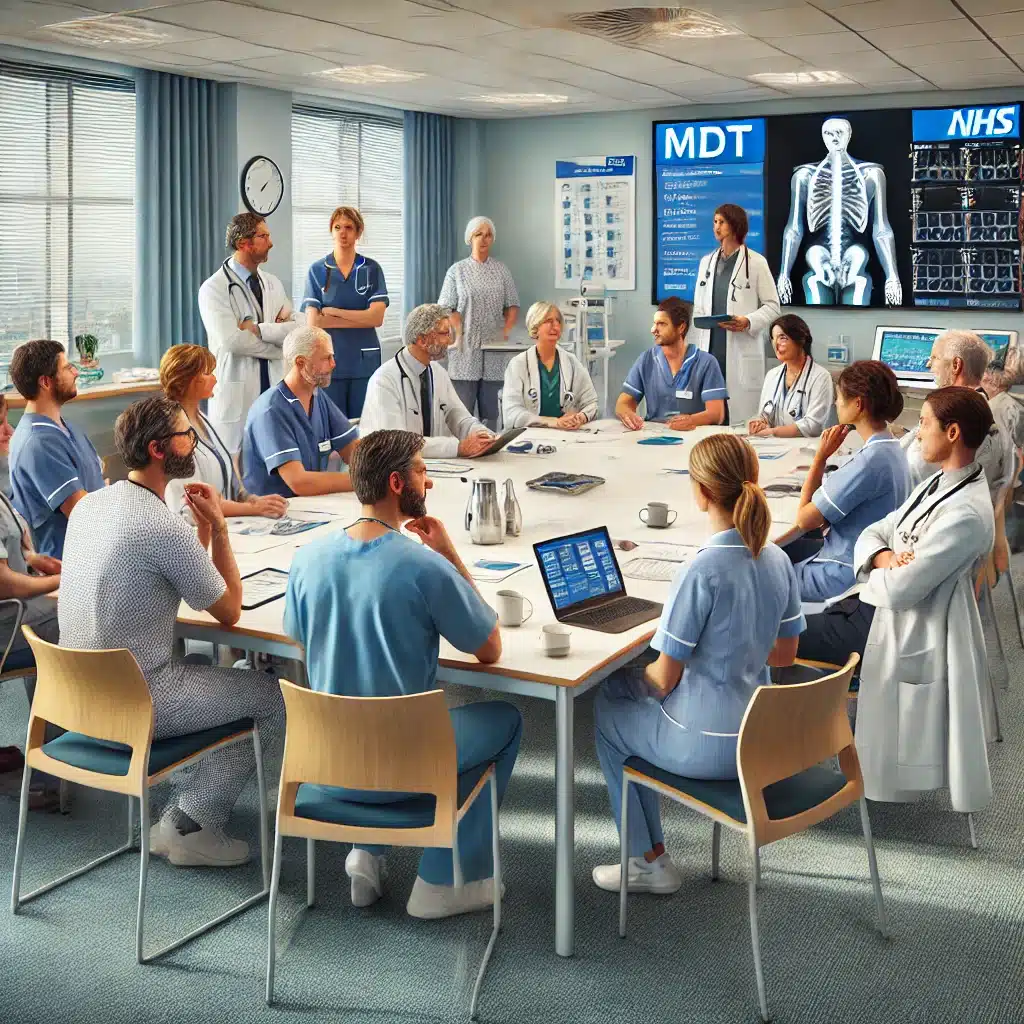
How MDTs Collaborate
1. Shared Goals
All NHS staff roles in an MDT work toward a shared goal: achieving the best possible outcome for the patient. This includes timely diagnosis, effective treatment, and a well-structured rehabilitation or discharge plan.
2. Clear Communication
Regular MDT meetings ensure that all staff are aligned on patient care. For example:
- Doctors present clinical findings and outline diagnoses.
- Nurses provide updates on daily patient progress.
- Allied Health Professionals (AHPs) share insights from their assessments, such as OTs and PTs discussing rehabilitation strategies.
- Social Workers outline post-discharge care plans.
Clear communication ensures everyone understands its responsibilities in the care pathway.
3. Collaborative Decision-Making
Every NHS staff role contributes expertise to the decision-making process. For instance:
- Radiologists and imaging teams provide diagnostic data that guide treatment plans.
- Pharmacists recommend medication adjustments tailored to patient responses.
- Specialist Nurses share condition-specific expertise to refine care strategies.
This collaboration ensures that care plans are well-rounded and effective.
4. Patient-Centered Care
The patient is always at the center of MDT collaboration. By leveraging the strengths of various roles, teams deliver holistic and tailored care. For example:
- Doctors create a medical management plan.
- OTs assist the patient in regaining daily independence.
- PTs focus on restoring physical mobility.
- SALTs address speech and swallowing challenges.
- Social Workers plan home adaptations and support services.
Benefits of MDT Collaboration
- Comprehensive Care: Collaboration ensures that all aspects of a patient’s health are managed effectively.
- Improved Outcomes: Studies show that MDTs enhance patient recovery rates and satisfaction levels.
- Efficiency: Dividing responsibilities speeds up diagnosis and treatment.
- Continuity of Care: Seamless communication between NHS staff roles ensures smooth transitions from hospital to community settings.
Challenges in MDT Collaboration
- Communication Barriers: Miscommunication can cause delays or errors.
- Role Overlap: Lack of clarity about specific NHS staff roles can lead to duplication of tasks.
- Time Constraints: Scheduling MDT meetings can be difficult in busy hospital settings.
Conclusion
The NHS is a dynamic ecosystem built on collaboration and teamwork, with every NHS staff role playing a vital part in delivering high-quality patient care.
From doctors and nurses to Allied Health Professionals (AHPs), support staff, and additional teams, the contributions of each member are indispensable.
Key Takeaways
- Teamwork Matters: The success of Multidisciplinary Teams (MDTs) highlights the importance of collaboration, communication, and shared goals in achieving optimal patient outcomes.
- Diverse Expertise: Every team member, from Occupational Therapists (OTs) and Physiotherapists (PTs) to radiologists and pharmacists, brings specialized knowledge that enhances the overall care experience.
- Holistic Approach: By addressing all aspects of a patient’s health—physical, mental, social, and emotional—MDTs ensure that care is patient-centered and comprehensive.
Final Thoughts
Whether you’re a new healthcare professional joining the NHS or someone looking to understand its structure better, recognizing the roles and contributions of different NHS staff roles will help you navigate this environment effectively. Together, these teams form the backbone of one of the most respected healthcare systems in the world.
What’s Next?
If you’re new to the NHS, take the time to:
- Learn about the roles and responsibilities of your colleagues.
- Attend MDT meetings to see teamwork in action.
- Foster good communication and collaboration with other team members.
The NHS is at its best when its teams work together, and every professional plays their part in delivering outstanding care.


